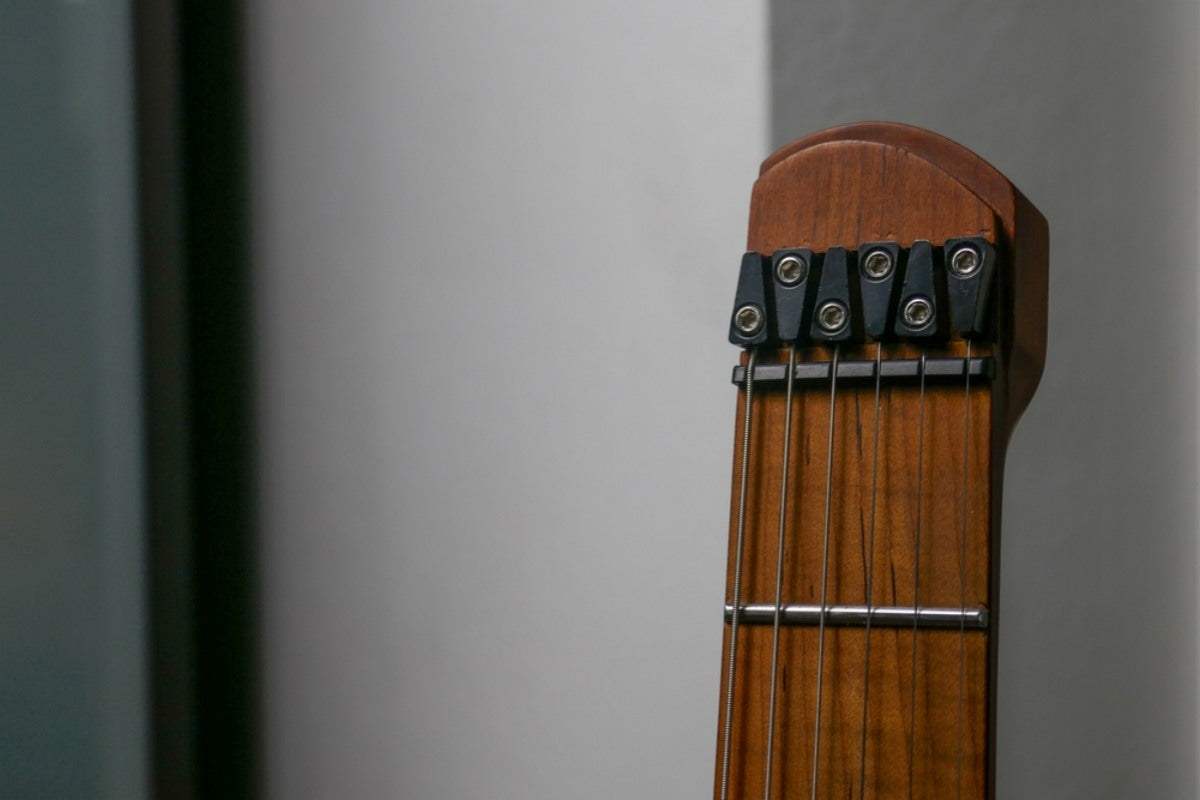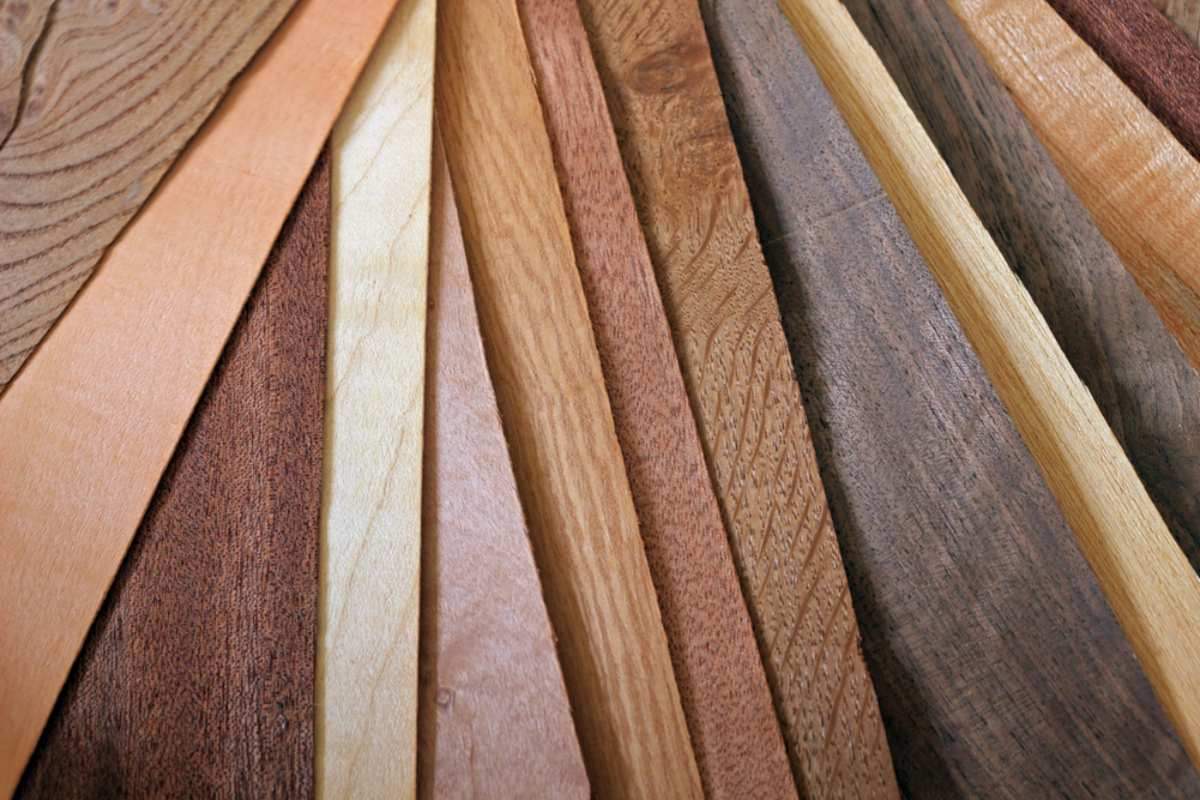Is your guitar's tone not quite hitting the right note? The problem might not be your pickups or pedals—it could be your bridge. Often overlooked, the guitar bridge plays a critical role in how your instrument sounds, feels, and stays in tune.
So, let's understand its function and how to work with it to unlock a whole new level of control over your music.
What are the Common Types of Guitar Bridges?
Before working with them, there are some common types of guitar bridges you need to be aware of:
a) Fixed Bridges

Fixed bridges are mounted directly to the guitar's body and don't move. Their design gives exceptional tuning stability and sustain, which makes them a popular choice for genres that demand long, ringing notes (like rock and metal).
Fixed bridges are typically made of wood or metal and come in various styles. The classic Tune-o-matic guitar bridge, found on many Gibson guitar models, is known for its sustain and tonal versatility.
Another popular style is the hardtail guitar bridge — which is also used in the Fender Telecaster guitar bridge, an iconic electric guitar bridge, famous for its signature twangy sound.
b) Floating/Tremolo Bridges

For those seeking a more expressive playing experience, a floating guitar bridge or tremolo bridge offers the ability to manipulate pitch in real time. These bridges are designed to move, allowing you to create vibrato, pitch bends, and even dive bombs.
Tremolo bridges are more complex to set up and maintain than their fixed counterparts. Common types of tremolo systems include synchronized tremolos (like those found on Fender Stratocasters) and the iconic Bigsby vibrato system, known for its subtle, vintage-style wobble.
c) Other Bridge Styles
Beyond fixed and floating bridges, there are a few other styles as well.
● Wraparound bridges: These bridges wrap around the back of the guitar's body for a minimalist design and unique tonal characteristics. For example, those Jaguar guitar bridges are found in some Fender models.
● Through-body bridges: These bridges pass through the guitar's body for enhanced sustain and stability.
Each style offers unique benefits and trade-offs, so choose the one that best suits your playing style and musical preferences.
What Should You Consider When Working with a Guitar Bridge?
To get the most out of your guitar's sound and playability, you need to understand the key guitar bridge parts. So here’s what to consider when working with a guitar bridge:
Intonation
Intonation is the ability of your guitar to play in tune across the entire fretboard, and it's largely determined by your guitar bridge. If your intonation is off, chords can sound dissonant, and individual notes won't ring true as you move up the neck.
Fortunately, adjusting intonation is often a straightforward process. Start by ensuring your guitar is tuned to standard pitch, then compare the pitch of a harmonic at the 12th fret to the fretted note at the same fret. If they don't match, you'll need to adjust the corresponding saddle on your bridge to either lengthen or shorten the string until the pitches align.
If you have a complex guitar bridge design or are struggling to achieve perfect intonation, consider using a specialized intonation tool to simplify the process.
Action
Action, or the distance between your strings and the fretboard, is determined by the height of your guitar bridge. That distance significantly impacts playability and even tone. A bridge that's set too high can make the strings feel stiff and difficult to press down, while a bridge set too low can cause fret buzz.
Finding that ideal distance is a matter of personal preference and playing style. If you prefer bending strings or have a heavier playing style, a slightly higher bridge might be preferable. Conversely, if you favor fast lead playing or have a lighter touch, a lower bridge might be more comfortable.
But keep in mind that adjusting the height of your bridge can affect your guitar's intonation, so to recheck and adjust your intonation after making any changes to the Action.
If you're unsure about making these adjustments yourself, seeking help from a qualified guitar technician is a wise move. Or, better yet, you can join our VIP Facebook group to get help from more experienced peers for free.
String Choice
The type and gauge of strings you choose can significantly impact the interaction between your strings and the guitar bridge. Different materials affect the tone and feel of the strings, while the gauge influences both the tension on the bridge and the overall playing experience.
Heavier gauge strings create more tension, which can be a factor for certain types of bridges, particularly floating tremolo systems. The material of the string, whether nickel-plated steel, pure nickel, stainless steel, or coated, can also influence the tone and lifespan of your strings.
Experimenting with different combinations of string types and gauges can help you find the perfect balance of tone, playability, and compatibility with your specific guitar bridge.
Upgrading Your Bridge
While most stock guitar bridges are perfectly functional, upgrading to a higher-quality one can offer significant improvements to your guitar's sound, playability, and overall feel. Here are some signs that your bridge might be due for an upgrade:
● Persistent Intonation or Action Issues: If you find yourself constantly adjusting your intonation or struggling to get comfortable action, it might be a sign that your bridge isn't up to the task. A better bridge can offer more precise adjustments and greater stability.
● Desire for Improved Tone or Sustain: If you're looking for a richer, fuller tone or longer sustain, upgrading to a bridge made of a different material (like brass or titanium) or a different design can make a noticeable difference.
● Customization and Aesthetics: Maybe you simply want to change the look of your guitar or add a personal touch. Upgrading your bridge can be a great way to do this, with a wide range of styles and finishes available.
Maintenance
A little maintenance goes a long way in preserving your guitar's sound and playability. Regularly cleaning your bridge with a soft cloth removes dirt and grime that can build up over time. For moving parts, like tremolo bridges or saddles with adjustable screws, a drop of light machine oil or lubricant can prevent squeaking and ensure smooth operation. This simple routine will keep your bridge functioning at its best and prevent premature wear and tear.
Take Control of Your Guitar's Tone
When you understand guitar bridge and how to work with it and change the bridge on your guitar, you get a whole new level of control over sound and playability. Whether it's adjusting intonation, setting action, or simply keeping your bridge clean, the small details make a big difference.
And if you're ready to take your guitar to the next level, consider exploring the high-quality bridges and guitar parts available at Guyker.
If you like this article, please share it!
Be sure to join our FB Group Guyker Guitar Parts & Accessories Community to share your ideas! You can also have connections with like-minded guitar players, Guyker updates as well as discounts information from our FB Group.





